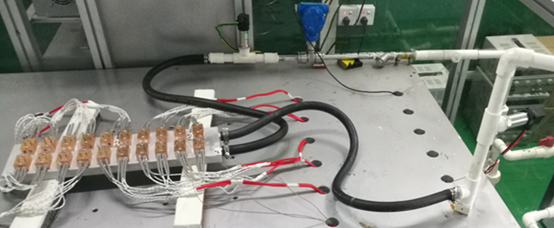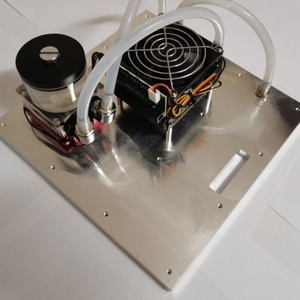Liquid Cooled Heat Sink
Model: Liquid Cooling Heat Sink For Cooling The Splicing LED Screen Module
Lead Time: 10days For Samples, 3-4 Weeks For Production
Regis Heat Sink Can Design And Manufacture Liquid Cooled Heat Sink According To Your Needs.Provide Free Thermal Simulation Report And Design Scheme, Customized Minimum Quantity 1PCS,Sample Lead Time Is 10 Days, Bulk Lead Time Is 3-4 Weeks
- Product Details
Liquid Cooled Heat Sink
Ⅰ) Application Industry Of Liquid Cooled Heat Sink
Personal Computer, Server, Communication, Energy Storage, Inverter, SVG, Telecommunication, Power Electronics, Transportation, Industrial Automation, Automobile, Lighting, Semiconductor, LED Display Screen, Etc.
Ⅱ) Structure Of Liquid Cooled Heat Sink
The liquid cooled heat sink is a small liquid cooling cooling system, which consists of 6 main parts: cooling plate, fan, heat exchanger, water tank, pump and piping. Regis Heat Sink is a professional liquid cooled heat sink design and manufacturer, with mature liquid cooling technology, can design and manufacture liquid cooled heat sinks according to your needs, and provide free thermal simulation reports and design proposals.
Compared with air cooling, the advantages of liquid cooled heat sinks are as follows:
1. Efficient heat transfer capacity, directional movement of heat through pipes
2. The heat is transferred through the active flow of the heat transfer medium, and the temperature difference between the heating end and the cooling end is lower
3. Quiet and environmental protection, sealed and dustproof, mature technology, safe to use
4. Suitable for high power density occasions, with high heat flux density and low thermal resistance
5. The heat-dissipating end is separated from the heat-generating end, and the core components of the equipment are more easily protected, and can be applied to various harsh environments
6. The temperature unevenness of different positions in the equipment is relatively weaker, and the use is more flexible
7. The volume specific heat capacity of the working medium is large, which can buffer thermal shock and reduce the temperature change rate of the heating element


The Back Of The Liquid Cooled Heat Sink Can Be Freely Customized According To The Shape Of The Equipment Being Cooled.
Ⅲ) Quality Control Of Liquid Cooled Heat Sink
1) Product structure inspection: The mechanical dimension of the liquid cooled heat sink is inspected by the height gauge and CMM equipment to ensure that it meets your requirements.

2) Heat dissipation performance test: Test the thermal resistance and pressure drop performance of the liquid cooled heat sink through a thermal resistance tester to ensure that it meets your requirements.

3) Air tightness test: Fill the closed liquid cooled heat sink with air pressure, and then put it into water to observe whether there are bubbles emerging from the liquid cooled heat sink. If there are bubbles, it is a defective product. This is the most basic reliability of the liquid cooled heat sink Testing, and also the most important reliability test, requires 100% inspection.

4) Internal inspection of the flow channel: Check whether there are aluminum chips, dirt, impurities, etc. in the flow channel of the liquid cooled heat sink through industrial endoscopy, so as not to damage the water pump impeller and cause the coolant to conduct electricity and damage the equipment.

IV) Service And Capability
| Material of the cooling plate | Stainless steel(SUS304、SUS316、SUS316L) aluminum (AL1060、AL1100、AL3004、AL6063、AL6061) copper(C1020、C1100) |
| Product maximum size | customize |
| final processing | Degreasing, anodizing, powder spraying, oil spraying, baking paint, electroplating, passivation |
| Flatness | 0.01-0.05MM(100*100MM) |
| roughness | Ra0.4-6.3 |
| maximum working pressure | 2-20bar |
| Coolant | Ethylene glycol solution, propylene glycol solution, pure water |
| flow | 0.5-80L/MIN |
| Coolant temperature difference between inlet and outlet | 0.5-8.5℃ |
| Inlet and outlet pressure drop | 10-500mbar |
| surface temperature rise | 5-20℃ |
| Thermal resistance | 0.003-0.01K/W |
| cooling power consumption | 0.05-50KW |







